Kindergarten


Airborne!
Writing
Teacher models- thinks aloud as s/he writes.
Teacher invites the children to participate- Shared Writing
Some children enter K well prepared to help plan and actually write some of the text on the first day. Kindergartens can spend 15 min. with Interactive Writing. As the year progresses extend the time to 20 and even 30 min. Having children sitting on a rug/carpet in front of the board or easel is most conducive for interactive writing. The purpose of interactive writing is to immerse the children in meaningful print -rich activities while teaching the concepts of print, phonics, punctuation, grammar, inflections, as well as sense of story and types of writing.
Unlined chart paper, marking pens, correction tape, and a pointer are needed. Mari Clay’s Observation Survey are good objectives to develop with the interactive writing.
As children volunteer a sentence the teacher will have a word or sentence repeated several times. The teacher counts the number of words. Guided questions will be asked such as what word should be written first. Children say each word slowly and think about the sounds as s/he begins to write the word. If children volunteer to write the word but misspell, the teacher compliments their attempts and then explains that other people will be reading their story so words need to be conventionally spelled. Children’s attempts can be easily corrected via correction tape.
The teacher will link words to be written with names of children in the class or use the alphabet chart. The teacher will point to each word for one to one matching.
There are many stories with a repetitive pattern Books with Repeated Lines whose structure could be imitated for class stories.
K children should be given time each day to write independently so they can use the knowledge gained from interactive writing instruction. It is amazing what they can produce with the support of a good role model, the teacher. The reading of story books and linking them to the children’s lives; the of displayed print around the room; their mastered sight voc.; and inventive spelling fill their sails so they can go sailing.
Mrs. Wills’ Kindergarten 9 Books that Get Kids Writing in Writers Workshop plus much more, e.g.Draw from personal experiences, class experience such as a class trip, and read daily many trade books of different genre to give them a sense of story. Or focus on one author for a week or two, reading aloud a different book each day. Discuss how the author uses description, characterization, and other literary techniques. Or read a book which has a pattern that can be modeled- a book the children have read many times and know quite well.
Another option is for the teacher to tell a personal story. She/he then begins to write the story soliciting help from the children.
Early literacy needs a balance between instruction and independent experimenting.

-
•Pre K art 5-8 Cross Curriculum

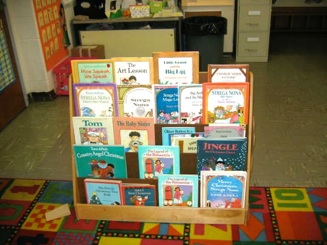
Mrs. Gugler’s Display of
Tomie De Paola’s Books



Mrs. Martin’s Lunch Count Table


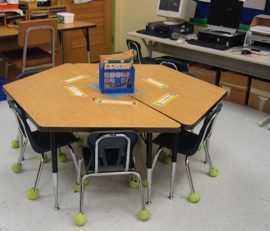
Note the tennis balls on the chairs- oooooh so quiet!
Morning Message
Ms. Capotosto’s Displays of Reading Material
Mrs. Tapogna’s kindergarten students begin reading and writing with their names. Their first activity of the day: they go to their color coded table and trace over their color coded names.
Mrs. Gugler’s chart Dec. 7, 2009

6 should nots are included at the end of the document:
-
•Should not include worksheets of drilled practice.
-
•Should not include formal handwriting instruction.
-
•Should not require that students copy text. Some children will want to copy letters or words that are on display around the room, but this practice should be optional.
-
•Should not include a traditional Word Wall like the one used at grades one and above. If a Word Wall is used at all, the only words appropriate for the Word Wall are students' names and environmental print (restaurants' names, etc.) with which the children have a close personal association. Some teachers create a chart of a very limited number of words (a maximum of approximately 10) during the second semester, containing high frequency words to which the children have been continuously exposed (i.e., he, she, was, is, the, a,...) and which would be helpful to know readily as they enter first grade.
-
•Should not expect kindergarten students to attend to self-selected reading for extended periods of time. 10-15 minutes might be a reasonable goal.
-
•Should not include Making Words activities just like the ones at first grade and above. An appropriate Making Words activity at kindergarten would use words with which the children are familiar and would likely involve having children "be" the word by standing with other children and holding a letter or might involve a group activity of cutting apart and putting together letters of children's names or environmental print.
Morning Message






















Centers
Divide class into 3 sub sections:
-
•Library Station (self-selected rdg.),
-
•Journal Writing station;
-
•Games or Digital Center
Digital Kindergarten
-
★iPad as a Reading Tool However NY Times 3/25/19 states
...Print Books Are Better Than Digital Ones
A center the children would clamor for is the iPad center. Many ABC sites, famous fables and stories are on UTube. IPad is cheaper than a computer and easier to connect to.
-
✤ Luca is 2.1 years old tuning into his favorite UTube story.
-
✦Kindergarten/Integrating Technology Resources Into Your Comprehensive Literacy Curriculum
-
★Online Stories /First School.WS
“First-School The preschool crafts, lesson plans and activities are appropriate and adaptable for kindergarten level .
-
★Why We Should Not Teach Tech in Kindergarten “direct instruction”1/7/18 Diane Ravitch
Resources
-
★Phonological Awareness Chapt. 2 of A Comprehensive Literacy Resource for Kindergarten Teachers
-
•Everything preschool everything for the preschool teacher and the parent “Children learn through doing.”
-
•Kindergarten Archieved 1999
-
★How to Manage Your Kindergarten Classroom Teacher Created Resources
Mrs. Gugler’s morning message
“Some students are ready to ‘take off’ while others are still struggling with the alphabet,” says Mrs. Gugler.
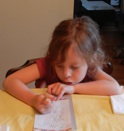

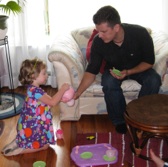
Gwyneth, having tea with Uncle Camilo at the age of 4.
Gwyneth, summer before K




























When he was two he asked his mother, “Am I being difficult like Max?”

The little boy grew up writing, reading, and enjoying sports.
-
★A tough critique of Common Core on early childhood education 1/29/13 Valerie Strauss
Their statement reads in part:
We have grave concerns about the core standards for young children…. The proposed standards conflict with compelling new research in cognitive science, neuroscience, child development, and early childhood education about how young children learn, what they need to learn, and how best to teach them in kindergarten and the early grades….
The statement’s four main arguments, below, are grounded in what we know about child development—facts that all education policymakers need to be aware of:
1. The K-3 standards will lead to long hours of direct instruction in literacy and math. This kind of “drill and grill” teaching has already pushed active, play-based learning out of many kindergartens.
2. The standards will intensify the push for more standardized testing, which is highly unreliable for children under age eight.
3. Didactic instruction and testing will crowd out other crucial areas of young children’s learning: active, hands-on exploration, and developing social, emotional, problem-solving, and self-regulation skills—all of which are difficult to standardize or measure but are the essential building blocks for academic and social accomplishment and responsible citizenship.
4. There is little evidence that standards for young children lead to later success. The research is inconclusive; many countries with top-performing high-school students provide rich play-based, nonacademic experiences—not standardized instruction—until age six or seven.
Note: This was written in 2010 and the Common Core writers didn’t listen. The corporate world developed the CC; not early childhood educators.
Michael Fiorillo posted on Diane Ravitch’s blog: 4/29/14
“...The direction in which kindergarten children are being pushed doesn’t bode well for the even littler ones.
The vandals of so-called education reform are trampling the children’s garden. Welcome to the kinderfabrik…”

Caught Reading
Mrs. Gugler’s Lunch Chart
class choose the type of lunch they want and then place the card in their “Lunch Pocket.” (Reading labels and their name)












-
★Common Core and Kindergarten: Too Much Reading Too Soon? 1/30/15 “...critics say most children are not developmentally ready to read in kindergarten, and point to research that shows kids benefit more from play-based programs.
-
★2 Much 2 Soon Video
-
★Those Joyful, Illiterate Kindergarten Students in Finland 10/5/15 Diane Ravitch
““The Power of Play” supports her findings: “In the short and long term, play benefits cognitive, social, emotional, and physical development…When play is fun and child-directed, children are motivated to engage in opportunities to learn,” the researcher concluded.”
10 Timely Tips for the First Days of School
By Harry K. & Rosemary Wong
“This is the best day ever,”
said five-year-old Matias the day when Camp Invention displayed the students’ inventions. Matias loves to learn and is full of enthusiasm when the topic and pedagogy are at his appropriate level, experimenting and learning via hands-on. Direct teaching, drilling, memorizing and regurgitating kill students’ enthusiasm and their love of learning. Camp Invention developed the most important higher order thinking skill: the imagination.

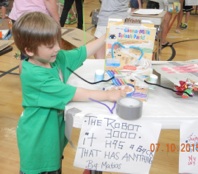

In response to
Is Common Core Killing Kindergarten?
How timely! Just this Friday I attended a kindergarten graduation of my grandson. Two classes joined in presenting a delightful program filled with music, action, and pride. (No wonder my grandson doesn’t want to leave kindergarten; he doesn’t want to leave his entertaining, super, fabulous teacher who stole his heart.) However, the tone among the people I spoke to, before and during transition was of anger, frustration, appalling, and disbelief when Common Core was mentioned. The night before the parents were informed of standards for first grade. “Common Core is making my children hate school; they don’t want to go!” said one angry woman.
I have the habit of striking up a conversation with any one who has a child in their care be it in the super market, beauty parlor, park or walking to their car. I have my feelers out to detect how parents and caregivers react to the CCSS. All are aware of the problems of Common Core and react very negatively- parents and grandparents. Some teachers are afraid to voice their concern. What is striking to me is that so many parents in various districts have autistic children. Are children being labeled autistic so they won’t be retained? Or is the CC Standards causing the problem? All the parents speak with horror about all the homework that is found in their children’s backpacks
I maintain that there should be no homework in kindergarten. Parents need time to read to their children. Precious time shouldn’t be stolen away to complete incomprehensible meaningless homework.
To expect young children to cope with material that is too difficult is poor teaching and will cause a student to regress and worse can cause a disability say nothing about squelching the desire to read and learn. I learned early on that children learn to read more quickly with easy material in lieu of challenging material. Years of working with At Risk children told me that primary children including second and third graders should not struggle; should not be forced to try and read on a frustration level. Students will regress if they are forced to read on a level that is too difficult for them. David Eskey & William Grabe maintain that there are three constants in developing the skill of reading: appropriate material, quantity of reading, and teacher’s judgment. CC has none of these constants. Since Pearson Co. anchored in England, bought up the major book companies, they control the material going into the schools. Teacher’s have to use CC guide lines - personal judgment can’t play a part in decisions.
Being able to regurgitate information will be of no use to the students if he/she can’t relate to the information in some way. Furthermore, some people/children have phenomenal memories but others do not. Just like actors on stage need props/cues to help them remember their lines, so do children need cues to retrieve information. Relating stories to the students and their background is like using mnemonics not only to help them retrieve information but more importantly to help them construct meaning and apply the information. CC Standards, however, are drill, memorize, and regurgitate. Reading First, a program at the core of the No Child Left Behind Law, has not made greater progress in understanding what they read than have peers outside the program, according to a congressionally mandated study- a program based on Reid Lyon’s phonetic approach. A study of the
$6 billion dollar Reading First program found it failing
Program Finds a Lack of Progress -
Yet, this flawed program is what Common Core has mandated. The homework my grandson brought home in pre k and in kindergarten begins the memorization process. Even though parents are told that CC first starts in third grade, the worksheets and workbooks are from Pearson Company which supports CC.
Phonics is only one aspect of a successful three-pronged, interactive reading approach to reading. The CC Standards do not address the three-pronged cueing system - semantics, syntax, and graphophonics- which supports the active learners, engaging all their senses, interacting with the text and responding to the text. We must begin with the child’s prior knowledge and end with the child. CC uses the "bottom up" approach of phonics. Background knowledge is not developed nor utilized. Children who have an auditory discrimination problem can't learn via the phonetic approach! So the governors or the school districts punish them/ by retaining them. How cruel!!!!!!! They certainly do not need such asinine books anchored in phonics such as “The Fat Dat Sat on a Mat.” They need books that they can relate to and that capture their attention.
Kulkarni, one who supports CC,states, “A lot of students, often from disadvantaged backgrounds and struggling schools, aren’t getting what they need early on to get them reading proficiently by third grade,” The author of the report, Chris Bedik, states, “Some studies trace the problem of falling behind early as far back as first grade.”
Kulkarni, a supporter of CC, doesn’t address one of the major issues hindering progress- the “one size fits all” mentality. No program is going to bring all children including the- learning disabled, those with emotional and physical problems- on par with the students who were ahead before they began for obvious reasons. Some people will never be able to run a 4-min. mile or to play Beethoven's Moonlight Sonata. However, educators must work with the child at the instructional level, where children feel safe enough to learn with all the mistakes that are part of learning, where they can achieve and feel good about themselves. This will not happen to children who are held under the burden of CC and its aligned testing. What children really need begins at birth when the mother begins to read to her child. You don’t have to be rich to read every night to your child.
Marilyn Adams states, “Children’s first grade reading achievement depends most of all on how much they know about reading before they get to school... The differences in reading potential are shown not to be strongly related to poverty, handedness, dialect, gender, IQ, mental age, or any other such difficult-to-alter circumstances. They are due instead to learning and experience - and specifically to learning and experience with print and print concepts.” Adams, Beginning to Read: Thinking and Learning about Print, 494pp
“Thorndike, after studying reading comprehension in 15 countries, discovered two conditions that prevailed in strong readers. All had been read to from an early age and had come from homes that respected education.” Rdg. Teacher March 1989
Many aspects of life influence a child’s future success. But the most important influence is reading to children.
"The single most important activity for building the knowledge required for eventual success in reading is reading aloud to children." Commission on Reading in a Nation of Readers
Dr.Carmelita Williams former president of the NRA stated, “You do not have to read every night - just on the nights you eat.”
Reading to children is the one variable that I have observed that has the greatest influence a child’s life. Experiences are necessary but being read to is crucial. Each of my children read to their children every night. Some read in a dramatic way- great animation; they talk about the story and they relate the story to their children. My one daughter started reading to her children at birth. The sounds and rhythm were very soothing. All my grandchildren are functioning above their age level. The reading in turn gives them many structures and ideas to draw from when they write. My one granddaughter in 6th grade won an area writing award for her age group. Reps from the State came to present the award.
How well I remember when the Ben Carson story came out. I used his story to inspire and motivate my students.
Ben Carson, M.D. was an inner-city kid who at the age of 11 was failing in school. His mother began requiring him and his brother to read two books a week and write book reports. The boys did not know their mother could not read their reports; she only went to second grade. Ben Carson became director of pediatric neurosurgery at Johns Hopkins University Hospital- the same Ben Carson running for president of the U.S.
My motto: where there is a will there is a way. The public libraries are gold mines. If parents can’t read, there are read along tapes and CDs. When I taught, I sent backpacks with books home for the week. Children could choose what book they want to read to their caregivers and what books they wanted the caregivers read to their children. Every backpack had read- along-stories - books accompanied with tapes or CDs. If the caregivers didn’t have a recording device I would supply a tape reorder. Sure I lost a few bags but the benefits out weighed the loss. One fifth grader’s mother told me that she was learning to read English by following along with her son. It wasn’t unusual for my At Risk children to make two years growth in one year.
Kulkarni who supports CC asks, “IF THE STANDARDS aren’t about mastery, then why have them?” Kulkarni says it’s about equity. “The idea of a standard is that every class should strive for this. Every student deserves this,” he says.
However, the opening paragraph of the Common Core Standards for ELA, “One of the key requirements of the Common Core State Standards for Reading is that all students must be able to comprehend texts of steadily increasing complexity as they progress through school.”
The word must continues to be used in the first paragraph. It does not read that the students should aim… It reads that the students must…
Besides ELA there are CC Math Standards. “Kamii notes that the foundation of math is the ability to think abstractly about numbers.”
Dewey and Jerome Bruner state you can teach young children but it had to be experiential.
Furthermore, thinking abstractly begins with developing the imagination which Common Core ignores.
Common Core introduces text with the drill of sounds, letters, abstract definition of new vocabulary and then repeat and repeat until the text is practically memorized - that is not reading. Crucial background knowledge is ignored. The Pre K - four year old-curriculum- includes the study of the alphabet: recognizing the visual and auditory plus writing the letters and words - so inappropriate for Pre-K. Dr. David Elkind, a Ph.D in Child Development, warned us of this in his Hurried Child book.
Dr. Elkind maintained, “In too many schools kindergartens (Now pre-k!!!) have now become “one-size-smaller” first grades, and children are tested, taught with workbooks, given homework, and take home a report card. The result of this educational hurrying is that from 10 to 20 percent of kindergarten children are being “retained” or put in “transition” classes to prepare them for the academic rigors of first grade! ...Many of our schools reflect the contemporary bias toward having children grow up fast. They do this because such schools have become increasingly industrialized and product oriented.”
“Hurrying children into adulthood violates the sanctity of life by giving one period priority over another. But if we really value human life, we will value each period equally and give unto each stage of life what is appropriate to that stage....In the end, a childhood is the most basic human right of children.”
James Coleman did an intensive study across the states for the government which revealed that the most important variable in school achievement was the family. (James Coleman, 1966, 1975)
Goodlad’s “Study of Schooling” beginning in 1981, also very intensive and extensive study, involved over 27,000 people. Goodlad’s commission looked at data within schools and they discovered that within the same building some classrooms achieved better than others they compared them to. The reason these children did better when they all came from poverty was “good teaching”
Through years of teaching experience and watching my own children and grandchildren, I, too, come to the realization that reading to children is the most important variable predicting the future success of children. When my children and now their children reached the age of two, they began picture reading- beginning stage if reading. Independently, off on their own, they would find a book and turned the pages of a book they loved. As they recognized objects in the picture and call out the name. At a young age they have their favorites they want read over and over.
There are many fantastic children’s authors who spark interests as well as tickle their funny bone. Eric Carle’s books tell the children about
nature in a very interesting and colorful way. William Steig and Ed Young have an hilarious sense of humor humorous. Patricia Polacco brings to life history. She was nearly fourteen before she could read because of a disability- dyslexia. Listening to stories developed a phenomenal imagination which she put to work at 41 writing stories. There are countless authors and illustrators out there with phenomenal. Delightful books which children need to be meet. They will develop the skills of reading and writing - not the inane, contrived phonetic controlled books which children are expected to learn from.

Bat Pig was walking down the street
when he saw a shadow.
On the way he saw the Joker Frog.
He threw a batter ring at Joker Frog.
He made himself heavy.
Then Joker Frog went to jail.

Spider Pig, Spider Pig
I love Spider Pig. Yeah!
The above is what 5 year old Matias drew and dictated when he arrived home from a farm visit with his pig Wilbur in hand.
All the way home Matias, spontaneously told a story about Wilbur - changing the character Bat Man to Bat Pig. He then improvised and sang Bat Pig using Bat Man’s theme song. On his ride home Matias included all the characters from Bat Man. He and his grandfather enjoyed taking an episode from the library and watching it together.
This is what we aim to have children do when they get older- write a sequel or another episode to a story read to them or that they have read in class.
Children need experiences - background
knowledge - to understand what they read and give them ideas for writing.
Common Core is so wrong when they advocate direct teaching: memorizing in isolation the names and sounds of the alphabet; sight vocabulary; and reading contrived nonsense print called a story in lieu of reading good literature, dramatizing, and singing to developing their imagination.
-
★Outrage: High-Stakes Testing in Kindergarten 3/8/15 Dr. Ravitch, “High-stakes testing has reached down into kindergarten, where it is developmentally inappropriate. Kindergarten is supposed to be the children's garden. It is supposed to be a time for learning to socialize with others, to work and play with others, to engage in imaginative activities, to plan with building blocks and games. It is a time when little children learn letters and numbers as part of their activities. They listen as the teacher reads stories, and they want to learn to read....”
-
★Welcome to Kindergarten. Take This Test. And This One. Alexandria Neason 3/4/15 ....ending with “Whoever made this happen should be arrested for child abuse and theft of childhood.”

![Yet blocks, sand, water tables and drama props have disappeared from the kindergarten rooms to push down the curriculum under the yoke of Common Core. Pencils are pushed into the hands of four year old pre-schooler expecting them to write on line paper. It definitely is not age appropriate. Their small muscles are not yet developed.
“As the tentacles of Ed Reform reach down into the earliest years, forcing standardized tests on young children, Defending the Early Years is there to block the monster from strangling the children’s love of learning”
In this short video, early childhood educator Kisha Reid explains what young children need most to thrive.
Play. When children play together, they collaborate. They solve problems. No one fails. They work and play together, as equals. Good practice for the real world.” Dr. Ravitch’s blog :Defending the Early Years: Kisha Reid Explains HowLittle Children Learn Best 3/23/19
Early Academic Training Produces Long-Term Harm
5/3/15 by Peter Gray
Research reveals negative effects of academic preschools and kindergartens.
in the 1970s, the German government sponsored a large-scale comparison in which the graduates of 50 play-based kindergartens were compared, over time, with the graduates of 50 academic direct-instruction-based kindergartens.[2] Despite the initial academic gains of direct instruction, by grade four the children from the direct instruction kindergartens performed significantly worse than those from the play-based kindergartens on every measure that was used. In particular, they were less advanced in reading and mathematics and less well adjusted socially and emotionally. At the time of the study, Germany was gradually making a switch from traditional play-based kindergartens to academic ones. At least partly as a result of the study, Germany reversed that trend; they went back to play-based kindergartens. Apparently, German educational authorities, at least at that time, unlike American authorities today, actually paid attention to educational research and used it to inform educational practice.
Post published by Peter Gray on May 05, 2015 in Freedom to Learn
TEACHERS SPEAK OUT: JIM ST. CLAIR](20._Kindergarten_files/shapeimage_5.png)









-
★Learning Through Play in the early years
-
★ Kindergarten, Here I Am! Approaches to Learning through Play and more “ Here I Am! Activity Guide introduces you to authors and illustrators who have written many books that are fun and interesting for kindergarteners. Each month you’ll learn about a children’s author or illustrator; each week you’ll learn about one of that author’s books. Don’t miss this monthly outline of readings, ideas, and activities supported by the following authors: Jan Brett Marc Brown Eric Carle Tomie dePaola Mem Fox, Don Freeman Kevin Henkes Ezra Jack Keats Steven Kellogg, Leo Lionni, Mercer Mayer, Robert Munsch , Jack Prelutsky, Dr. Seuss, Don and Audrey Woods
-
★Lesley University Center of Reading Recovery and Literacy Collaborative
-
✤Tell Me a Story King County Library System 1756 poems and songs accompanied with videos and story tellers
-
✦Webbing into Literacy/A Rhyme a Week, Book a Week, Alphabet a Month etc.








































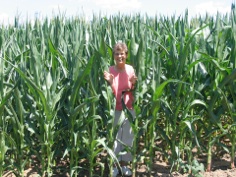
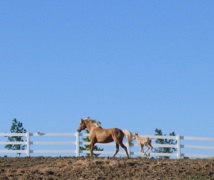

Crop Farm
Here are ideas for each week of each month. Adaptations made from a Hartcourt Program of the past Click on underline words and titles
Theme 1 Traveling and Body/ All About Me
Lesson l. Sept. –first week Book: It’s a Perfect Day or Chameleon
What do you like best about this book? Why?
What is the story about?
What are some ways the characters in this story are alike?
How are you like those characters
What are some ways they are different?
Why do you think the author calls this book____________?
What might be another title for this book? etc.
Song, poem, & picture of a train and sing Transportation Themes
Songs: “Colors”
“10 Little Fingers “
10 little fingers on my hand. They can clap( 3x) in the morning, in the evening, in the moonlight.
Ask the children to recall an action.
Repeat the word and write it on the board.
Write and read the list; have the group demonstrate each action as I read it...
walk, dance, skip, hug...
“Where Is Thumbkin?” Change the words to someone they know.
“Down by the Bay” Add more verses.
Poem: “Feet”
Book: Here Are My Hands, Poems Hands
List the actions
Ask the children choose one action as their favorite.
Write on Chalkboard:“I like to ____________because_________.”
Read sentence frame and model response e.g., “I like to run because I go fast.
Write on Chart Paper: “I like to ____________ because ________.”
Children read as I write.
Hands: Poem: “Two Hands”
Two hands make the raindrops
Falling from the sky.(Hand in air. Make fingers move like raindrops.)
Two hands make an umbrella
To keep you dry (Forefinger over head; spread other hand on top of forefinger.)
Two hands make big spiders
Climbing up the wall (Make fingers climb.)
Two hands make a mountain
Tall, tall, tall. (Hands high overhead with fingertips touching.)
Two hands make a butterfly
Fluttering away.(Lock thumbs. Flutter hands.)
Two hands make the sunshine
On a sunny day. (Arms overhead; join together to make a large circle.)
Two hands make a sailboat
Sail the ocean deep. (Thumbs together; move in sailing motion.)
Two hands make a pillow.
For you to go to sleep. (Hands together; read on hands and close your eyes. Carol Quinn
“Yellow Yellow”
List at the board other things that are yellow.
Bulletin Board: “My Rainbow Flower Garden” Calendar with flowers
of different colors or “Balloon Man” and colored balloons
Songs for action and body parts
“Put Your Little Foot”
Put your little hands , put your little hands, put your little hands up high,
Wave your little hands, wave your hands high, wave your hand high
Shake your little hands down low... Now hide them etc.
A moving song to the tune of Jingle Bells
Clap your hands, stomp your feet, wiggle all around.
Reach your hands high in the air, and now let’s touch the ground.
Hold your head, hold your hips, give yourself a hug.
Lay down flat up on the ground, but watch out for the bugs.
Toes Are Tapping to the tune of “Skip to My Lou”
Hands are clapping, clap clap, clap
Hands are clapping, clap, clap, clap
Hands are clapping, clap, clop, cap
Clap your hands, my darling.
Toes are tapping, tap, tap, tap
Toes are tapping, tap, tap, tap
Toes are tapping, tap, tap, tap
Tap your toes, my darling.
Arms are swinging, Fingers are wiggling, Eyes are blinking, Tongues are clicking,
Heads are nodding, Fists are pounding, Hips are twisting, Elbows are bending etc.
Lesson 2. Identifying Colors: blue, green , red, yellow / Left to Right,
Books:
ColorsEnchanted Learning
What do you like best about this book?
Have you ever eaten any of the foods that the caterpillar ate for lunch?
Describe how the food tasted.
Theme: of Colors by Cheryl
Songs: Caterpillar Song with pictures:
Ever crawl under your blanket
And felt all warm in the dark of your bed?
Imagine you sprouted your very own wings
Then leapt right up with your arms outspread.
Chorus:
Just like a caterpillar
In a cocoon- so shy
Then in secret darkness
Turns to a bright-winged butterfly.
Ever crawled into you closet
Shutting out the streamers of sun
And dressed yourself in your brightest clothes
Then popped right out and surprise someone?
Just like a caterpillar in a cocoon so shy
Chorus
Ever feel that no one could see you
That maybe the folks in the world are blind?
But one day your colors will all take hold
And people will see you flutter and shine.
Chorus
Change name to someone in the class.
Write on chalkboard: ______ wore a blue shirt.
wore a red ____.
“If Your Favorite Colors Is…”
“Hookey-Pokey” or “Loopy-Lou”
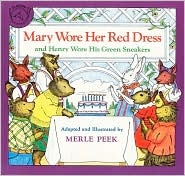
The book is in your library.
Poem: “Yellow Marshmallow”
Display the big train / Train Theme
Have the children turn to the person next to them and tell him/her what your favorite colors is and
name some things that are those colors.
Sing: “If You Favorite Color” is blue, touch your shoe. Etc.
Hold up the words .
Sing:“I’m a Little Choo Choo” on the track. Listen to my wheels go clickety-clack. Listen to my bell say….”
Sing: “One Blue Square” to Three Blind Mice”
One blue square, one blue square, see how it’s shaped, see how it’s shaped
Four big corners it does have. Four big corners it does have. One blue square. One blue square.
Circle song: to “Jingle Bells” “Round circles, Round Circles, Round circles to make, Oh what fun it is to draw round circles to shake (today).
Lesson 3 Colors: white, orange, purple, black / turnips, carrots, grapes, and watermelon seeds on
different shapes. Identify letters in the alphabet-
Sept. Third Week in Sept.
Poem about colored bears
Book: “Very Hungry Caterpillar”
Bulletin Board: “Very Hungry Caterpillar” with phrases “1 slice of boloney, 1 cucumber, 1 piece of cherry pie, etc.
Nursery Rhyme: “Little Boy Blue” Change actions
Books: Little White Duck and sing the song.
I Like me (After teacher reads the story tell the children that you want them to help me retell the story, “When I pause you tell me what the word should be”
“I like my curly…..(tail) my round ……., and my tiny little …….(feet).
What are some things you like about yourself?
Why do you think the pigs says she is her own best friend?
Who is your best friend?
What do you like to do best when you are alone?
What do you like to do best with someone else?
Write: I like______
Song: “5 Little Ducks” on charts
“ Put Your Finger in the Air”,
” I Have 10 Little Fingers”
Poem: “Yellow Marshmallow”
Deep down in my pocket I reach in and find
A magical something that’s one of a kind.
This thing can turn me into anything yellow-
So please say “Hello!” to my yellow marshmallow.
Hello there, Marshmallow. Don’t you look
Yellow today! Are you ready? Here’s how it works!
“You’ve Got a Face Like No Other Face”
“Black Socks” Write: “_____________socks get dirty.
_______________get dirty.
Who is wearing a shirt the same color as _____shirt?
____, how are your shoes different from_____ shoes?
Whose eyes are the same color as _____eyes? Whose eyes are a different color .
Rhyme: “Hunting We Will Go” sing with pictures.
Nursery Rhyme: Humpty Dumpty
Humpty Dumpty sat in a tree.
“ saw a yellow bee.
“ sat in a chair
“ saw a brown bear
“ went for a walk. He met a man and started to talk.
Lesson 4
Body Awareness / Opposites / Same & Different / Identifying individual letters in text/ tracking print left to right
Oct. first week
Story: Three Billy Goats Gruff with music; dramatize
Have you ever done something you were afraid to do? How did you feel about it? What did you do after you did it?
The Troll in Seattle
Taken by Ryan W. in Seattle
Three Little Kittens magnetized (Put clouds above the kittens for speaking words)
Have you ever lost anything? How did you feel? What did you do?
What is the first thing that happens to the kittens?
How do you think the kittens feel at the beginning of the rhyme ….at the end?
Opposites - use book of opposites: happy/sad clean/dirty good/ bad top/ bottom
up/ down in / out fast/ slow
Songs/ action : “This Old Man”
“Head , Shoulders, Knees, and Toes”
“If Your Happy and You Know It”
Nursery Rhyme: “Humpty Dumpty”
Humpty Dumpty sat on a bench because his bicycle broke and he needed a wrench
“ started to dance because he got airline tickets to France.
“ sat on the floor and watch ants marching to the door.
“ started to sing. When he woke up he heard the church bells ring.
“ was jumping on the bed . He slipped off and fell on his head.
Lesson 5 Theme 2 : “I Wonder” Exploring the Make-Believe World : predictable text, retelling
Create a Bear Folder Chant “Going on a Bear Hunt”
Story: Goldilocks and the Three Bears with magnetic pictures.
Who was your favorite character? Why?
What would have you done if you were Goldilocks?
Props: puppet faces magnetized; painted pictures of the 3 beds, chairs, bowls
Poem about a Grizzly Bear
Song: “Grizzly Bear”
“Bear Went Over the Mountain” Change “bear” to a child’s name
“The Bear” p.38
Poem / Chart/ action: “Teddy Bear, Teddy Bear”
Display large bear
“Now sit right down and fold your hands and don’t say a single word.”
Write: If I were a Baby Bear….. (children write their name after their
sentence.) e.g. “I would chase Goldilocks away.
I would ask Goldilocks to play with me.
I would make Goldilocks help me fix my chair.”
Write the dictated sentence on chart paper and have the children write their name after it.
Or “The bear went down to the farm….
The bear ate ______ and _______, ….for his picnic lunch
Word Web: eat, talk, help, read, play, swing, stir,
Transparency: “Hop Like a Bunny”
Hop 3x like a bunny.
Run 3x like a dog.
Swim 3x like a turtle.
Jump 3x like a frog.
Tramp 3x like an elephant.
Fly 3x like a bird.
Lesson 6 Mm ; auditory discrimination / position words : on, off, up, down
Oct. *Going on a Witches Hunt” Chant: Children repeat teacher’s lines and imitate his/ her actions.
Halloween Lesson Plans and Activities
Story: Twelve Days Before Halloween
Props: Magnetized pictures for the retelling of the story.
Auditory Discrimination: Mm Sing: “Did You Ever Hear an M word, and
M word? Did you ever etc. Display pictures of m words and have children find the picture.
Poem: “5 Little Hoot Owls.”
Song/ Action : “Muffin Man”
“Ms. Mary Mack, Mack, Mack” with book
Poster Dark Dark Woods
Laminated posters: Monster’s Birthday, Monster’s Pet, Five Little Monsters
Chart:
Props: Mice collection including the magnetic mice
Bat collection
Nursery Rhymes: “Little Miss Muffet”
Little Miss Muffet wore a blue dress; she spilled her peach pie and made such a mess.
“ had hot dogs for lunch; She ate so many she couldn’t eat her punch.
“ wore a ribbon of yellow. She wanted to impress a certain young fellow
“ wore her favorite purple pants. When ever she wore them she started to dance
“ wanted to wear a red hat, but it would not fit on her head because she was too fat
“ wore green sneakers. She liked to watch basketball and sit in the bleachers.
“ had 3 pieces of cake ; when she finished the fourth her belly ached.
Write a phrase on a chart/ chart paper. Children tell you what to write. If someone knows what letter a word starts with he/she takes the pen and writes it. If anyone knows the next letter, that child takes the pen and writes it.
Bulletin Board : Halloween display with witches and goblins on bulletin board. Poem and pictures of mice.
-
✤Or use the Magic Theme: Magic Pot
Lesson 7 Retelling; P
Oct. (Halloween)
Story: Where the Wild Things GrowFollow observation outline
Nursery Rhyme: Five Little Pumpkins to Color “Five Little Pumpkins” “5 Little Witches” Colors All Around
Poster of many colors
Draw an obstacle that had to be over come in hunting for a witch, e.g., path, swamp, tree, swamp, cave
Write a phrase or sentence for each obstacle.
“Walked through the grass….
Waded through the swamp…
Climbed up a tree….
Tip-toed into the cave….
“There’s something in my garden so big and orange and round…”
typed on a sheet of paper.
Nursery Rhyme: “Pease Porridge”
Poem: Puffin
Song: Paw Paw Patch
P for pump
Lesson 8 M and Position Words / Farm/ What Do You Wonder About
Oct.
Writing: Who , What , Where chart
Story: Mitten Story
Props: magnetic mittens
Retell
What would you do if shivering person came and wanted shelter from the cold? What if the person looked mean and fierce?
Poem : big book of Six Chicks
Song: “I Love Mud”
“Muffin Man” w / Action
“I Like Mice” to the tune of Frere Jacques; hold a toy mouse and sing:
“I like mice, I like mice,
Squeak, squeak, squeak; squeak, squeak, squeak.
Nose and eyes and whiskers,
Nose and eyes and whiskers,
I like mice, I like mice.”
The Goblin in the Dark to “Farmer in the Dell” Piggyback Songs
Child – goblin; witch; bat; ghost/ boo
Write: Ghost, Ghost, what do you see?
I see ___________looking at me.
Nursery Rhyme: “Mary Had a Little Lamb”
Song: “Cat Came Back”
Lesson 9 P cont. Position words Theme: What Do You Wonder
Nov.
Story: Henny Penny with puppets.
Do any of you ever visit a pumpkin farm? (Show picture .) Trace the P on the rug, in the air
Song: “I Had a Cat and the Cat Pleased Me”
Alliteration: Pantomime Palermo ponies prancing piccolos piping
Pancakes piling up piglets pigging out.
Activity: Pack bag to visit Grandma in Poland:
“I will take : paper, pencil, a picture, a pipe, a penny, a papa…”
Song/ Action: “Paw Paw Patch”
Poster: Purple Cow
Puffin on chart
Chart: “Pease Porridge Hot…”
Pease Porridge red, Pease Porridge green
Pease Porridge in the pot making us scream.
Bulletin Board: Farm scene
Write:
Lesson 10 Theme: At Home /Living in Family
Nov. Thanksgiving Theme / Bb
Story: The Turnip with puppets
Songs: Thanksgiving Song lettered on a chart(tune of Twinkle, Twinkle)
“Thanksgiving Song “ p. 43 Piggyback Songs
“I’m a little turkey.
Look at me.
Fat and plump as I can be.
Don’t you try to catch me;
‘Cause, you see
I’ll hide behind this Old oak tree.”
What word could we use instead of turkey that rhymes with turkey? Katie, donkey, monkey, bee, Courtney
Song/ Action: Mulberry Bush
I Have Ten Little Fingers (They can clap in morning, afternoon and in the evening ( or night)
Chart: poem about B words
Auditory Discrimination of B: Write on chart and track:
Buzzy, buzzy, bumblebees,
Buzzing, buzzing right by me.
Buzzy,buzzy, bumblebees,
Buzz on by, don’t bother me!
Display pictures beginning with B: baby, bear, boy, bus
Riddle:
I am round and I bounce.
I have pictures and words on my pages.
You sleep in me at night.
I have big ears and I hop around.
Jump Rope Rhyme: “Teddy Bear, Teddy Bear”
Make a bear face out of a paper plate. “Billy Bear” what does he like to - words beginning with b like berries and boat
Display basket with B objects in it.
Song : to the tune of “If Your Happy …” If you a have a b word share it now (3x)
Poem: “Goodnight Mr. Beetle”
“Bird Talk”
Lesson 11 Family S/ Review B, P, M
Nov.
Story : Enormous Watermelon compare with the Big Turnip
Review:
Farmer in the Dell but instead of taking a wife take someone who knows a word that begins with the same sound as sandwich.
“Sally go round the sun,
Sally go round the moon,
Sally go round the chimney pots
On a Saturday afternoon”
Track print
Join hands and skip around the letters in the circle as they say the verse once more.
Trace S on partners back
Make a list of words coming out of the snakes’ mouth that begin with s.
Poem on Chart: Round is a Pancake
Take lines, cut up and have students work with partner to rebuild.
Write: What we are thankful for:
Lesson 12 S Review M and P/ Theme: Out the Front Door/ Reassembling a dictated, cut-up sentence
Dec.
Story: Gingerbread Boy
Props: Gingerbread men use with verse:
Chant it with the children
Song; melody to “If You’re Happy and You Know It.”
“If you have a m word share it now
If you have a m word, share it now
If you have a m word and you think it should be heard,
If you have a m word, share it now.….
Props: Take puppet of baby bear and attach a bag to it. “What does Baby Bear like to eat
That begins with a b: berries,
S review to the melody of “For He’s a Jolly Good Fellow”
Do you know a jolly good s word?
Do you know a jolly good s word?
Do you know a jolly good s word?
Then say it for us now
Story: Elves and the Shoe Maker or Caps for Sale
How are the Caps for Sale like the Gingerbread Man? Caps : man plays trick on monkey; Gingerbread : fox plays trick on the gingerbread man.
Explain “Monkey See, Monkey Does” because monkeys in the zoo seem to like to imitate the actions of people. Elves and the Shoe Maker or Caps for Sale
Explain “Monkey See, Monkey Does” is similar to “Follow the Leader” except children stand in one place during the game. C. stand in a circle so they can all see on e another. Individual children take turns performing an action, such as clapping, or making a funny face. The other children pretend to be monkeys and imitate the action
“So he went to sleep…” Let children predict what will happen next in the story.
Writing: write a story about an experience
Phonemic Awareness: help stack the caps up by adding to the pile of t words: toothbrush, tent, toaster, tire….
Poem about Christmas: “Once there was a tiny green, green, tree.
And on that tree there was a….
Sing the poem to the repetitious song of “In the Woods.”
Phonemic Awareness;
“I am going to say a tongue twister but I am not sure it makes sense; I don’t think I have the right beginning sound. .”
Miny murtles miptoe in mall mulips
Siny surtles siptoe in sll sulips.
Finally say, “Tiny turles tiptoe in tall tulips.”
Those that have it right say it several times. Repeat the tongue twister several times suggesting other animal names , such as tigers, to substitute for turtles.
Practice saying t words.
Riddle: “I am a toy that spins around.
I am round . What am I?
I am something you might sleep in on a camping trip. What am I?
I am a piece of furniture with a top and 4 legs. What am I?
I am an animal that carries its home on its back. What am I?
Poem/ action / puppets: 10 Little Elves- Santa Helpers – finger puppets.
“Tom Tom the Piper’s Son”
Songs: Up on the House Top
Days of Christmas
Jingle Bells
Writing: “Hop Like a Bunny” Review the poem with children and invite them to make up a verse about a monkey. Then write ”________like a _________.” on the board, and fill in the blanks with the new words. Read the sentence for everyone to act out. (Children take pen and act like a scribe - write letter or word they know.)
Lesson 13 Dec.
Exploring the Outdoors Sequential Order: first , next, last; auditory discrimination; balloons for voices; review m, s, p letter and sounds
Review T sound: “The Absent-Minded Toad can’t remember what words begin with a t. Put you fingers in the shape of a t if the word begins with a t sound. Toad, to, take, town, tortillas, toast, tomatoes, try
Story: Mr. Grumpy’s Outing
Do you think the story was funny? Why or why not?
Which of the animals would you take for a boat ride?
If you say Mr. Grumpy’s boat going by, would you ask for a ride yourself? Why or why not?
What advice would you give Mr. Grumpy before his next trip?
Write: think of your favorite animal. What does Mr. Grumpy and your favorite animal say when your animal wants a ride in the boat.
Song: “Row, Row, Row Your Boat”
We got on the bus
We rode to the zoo.
We saw a bear
(Put pictures along the chalk ledge.)
Song: A-walking we will go,
A-walking we will go,
Hi, ho , the derry-o
A-walking we will go.
Chart: Cars
Song “ Windshield wiper goes swish, swish , swish
Horn goes beep, beep
Tire goes hum hum
Write: _______________goes _________________.
12 Days of Christmas
12 Bugs of Christmas
Lesson 14 Dec. Obj. :A Review M,S,P Theme: Friends
Story: Polar Express or Elves and the Shoemaker
Identify Aa
Poem: “Eat an a apple (right hand to mouth)
Save the core (Close right hand in fist.)
Plant the seeds (Touch hand to ground.)
And grow some more! (Extend both arms out.)
Auditory Discrimination: a lligator a pple a nimal a ccident a x
What is the same about all these words?
Name the words that beginning with an a (rub tummy if it does)
Ax pig alligator frog ice and astronaut hill zoo Ann sun fly
Song: Piggyback Songs p. 13
Snowflakes Falling From the Sky to the tune of Mary Had a Little Lamb.
Snowflakes falling from the sky 3x
“ to the earth below.
Watch them as they dance and whirl 3x
‘ dance and whirl, soft white winter snow.
Snowflakes to the tune of Twinkle, Twinkle Little Star
Snowflakes snowflakes Dance around
Snowflakes, snowflakes Touch the ground
Snowflakes, snowflakes In the air
Snowflakes, snowflakes Everywhere
OR Use the Sea Theme:
Lesson 15 Dec. Theme: winter weather; friendship/ H
Story : Snow Child “Four Seasons”
Petunia’s Christmas
Song: “5 Fat Snowmen each with a Funny Hat”
“Snow Flake”
Poem: “10 Little Snowmen Sleigh Riding”
Poem: “The Bear Went Over the Mt.”
Change words to “ Keisha went to the theme park. Etc.
To see what she could see
A big, fast roller coaster, etc.
Was all that she could see.
Song: “The Bear Went over the Mountain”
The bear went down to the farm…
To have a picnic lunch.
The bear ate ______and ______,….
For his picnic lunch.
“A-walking we will go…”
Song: to Mary Had a Little Lamb.
Hello, everyone, and how are you?
How are you? How are You?
Hello, everyone, and how are you?
How are you today?
Auditory Dis. : If a word begins with an Hh hold up a happy face, a sad face if it dose not begin with an h.
Make letter Hh with a sponge
Rhyme: Jack and Jill Went up the Hill
H for Home
Read poem “Home”
List types of homes: apartments, condominiums, ranch, two-story, moblile
Story: House Is a House for Me
Harry and the Dirty dog
Henny Penny
Hippopotamus What name could we give him: What does he have that begins with an h - heart
Song: “If Your Happy and You Know It”
Lesson 16 Jan. K/C Theme: Working Together/ Patterns
Illustrate the meaning of pattern. You and I’ll “Let’s put our heads together and dream the same dream.
Write: You____and I’ll__.
Story: Big Al or Lion and the Mouse
Song: “This is the Way” a K word starts, a K word starts, a K word starts. This is the way a k word starts. A ward starts like car.
Poem: Touch
I love soft things so very much,
Soft things to feel,
Soft things to touch
A cushioned chair.
A furry muff,
A baby’s cheek,
A powder puff,
A bedtime kiss,
A gentle breeze,
My puppy’s ear
I love all these.
Song: “I Had a Cat and the Cat Please Me”
Nursery Rhyme: “Little Boy Blue” Track the words
Change the c words to camel in the carrots; cat in the corn;
Old Mac Donald had a farm, EIEIO Use instruments for rhythm
And on his farm he had a bug, EIEIO
With a buzz-buzz here, and a buzz-buzz there
Old Mac Donald had a farm, EIEIO
Write a story on chart paper
Poem writing: You’ll_____and I’ll _______
And we’ll _____together.
You’ll and I’ll
In any kind of weather
Josh build a road and I’ll build a road
And we’ll build a road together
Josh builds a road and I’ll build a road
In any kind of weather.
Felcia paints a picture and Erin paints a picture
And we’ll paint a picture together
Felicia paints a picture and Erin paints a picture
In any kind of weather,



Children need an experience to talk about and in turn to write about. What better experience than spending meaningful time with a loving, caring, kind Grandpa?

Tip: Wear oversized colored framed glasses when evaluating children Tell the children that when you wear those they should not talk to you because you are observing (Carry your chart around during this time.)

“Preschoolers who are read to learn a ‘book Language.’ From being read
to, they implicitly learn many of the major differences between between oral
and written language. Further, they expect to find this particular type of language
in books. ...Well-read-to-children know the language of written narrative
and that they expect to find it in books,.
Themes:
-
✦Jack-o-lantern - how does it feel
-
✦Owls- each child gives a statement of what they learned.
-
✦Very Hungry Rabbit
-
✦“Farmer, Farmer What Do I See”
-
✦Polar Bear.... What Do You Hear/” in desert, forest...
-
✦House Is a House
-
✦Spilt Milk - folded paint
-
✦Christmas Tree - I wanted to decorate but ... I wanted to...
-
✦The Important Book -topic sentence, details
-
✦Thematic Dictionaries: large pictures with labels for each theme e.g., Spring: flowers, bicycle, pussy willows
Written by Marie Gregory’s Class
Black socks,
They never get dirty.
The longer you wear them
The stronger they get.
Sometimes I think I should wash them
But something inside me
Keeps saying NOT YET!
Not yet! Not Yet!
Let’s Sing
by M.Gregory’s K Class
Pigs, pigs!
We’re absolutely, positively,
WILD about pigs!
They’re really good to eat
Beautiful
Fabulous
Super Duper PIGS!!
Yellow Bill Duck
by Marie Gregory’s K Class
I am a bill duck
with a black feather back
I waddle, waddle, waddle,
I quack, quack, quack.
I dabble for my dinner
a swish, swish, swish
I gobble, gobble, gobble
I wish, wish, wish.
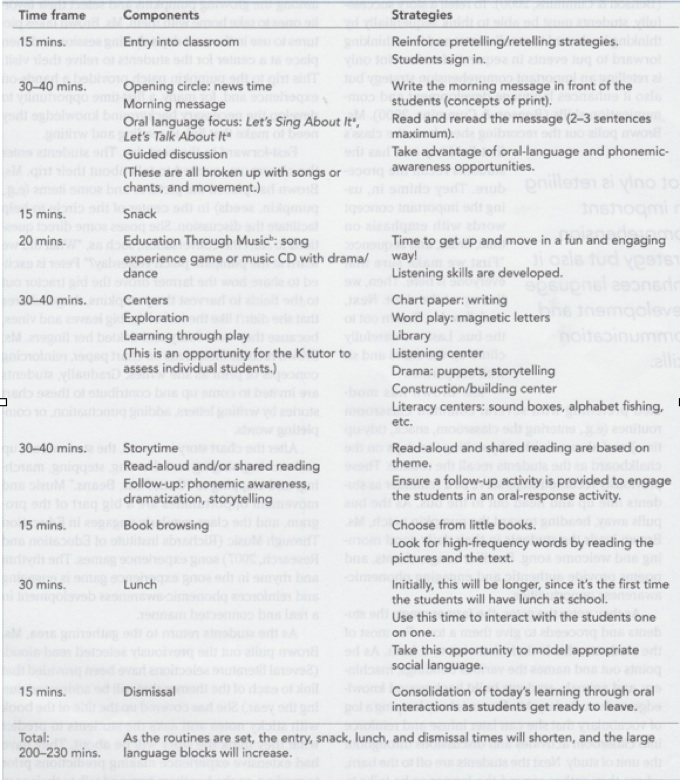

Paul 6 months into Kindergarten

Paul 6 months into Kindergarten

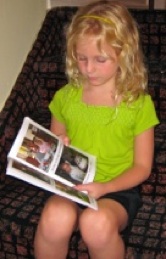
Ellie, reading the book Grandma made of her via photos with captions taken of her involved with various activities.
Prior to Common Core this is what the Kindergarten curriculum looked like:


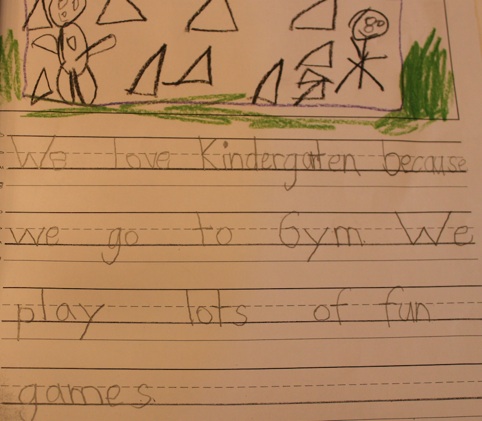
-
★Fountas & Pinnell Literacy 9/21/15

Written by Luca in K
contributed by Ricardo Daniel 7/2022

Constructed by Mary DeFalco
Revisited 4/1/19

Pre Common Core bulletin boards displaying kindergarten activities




